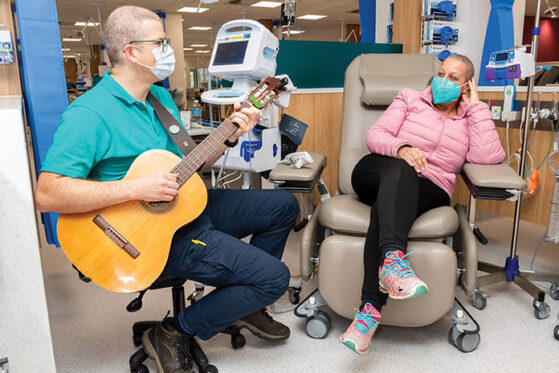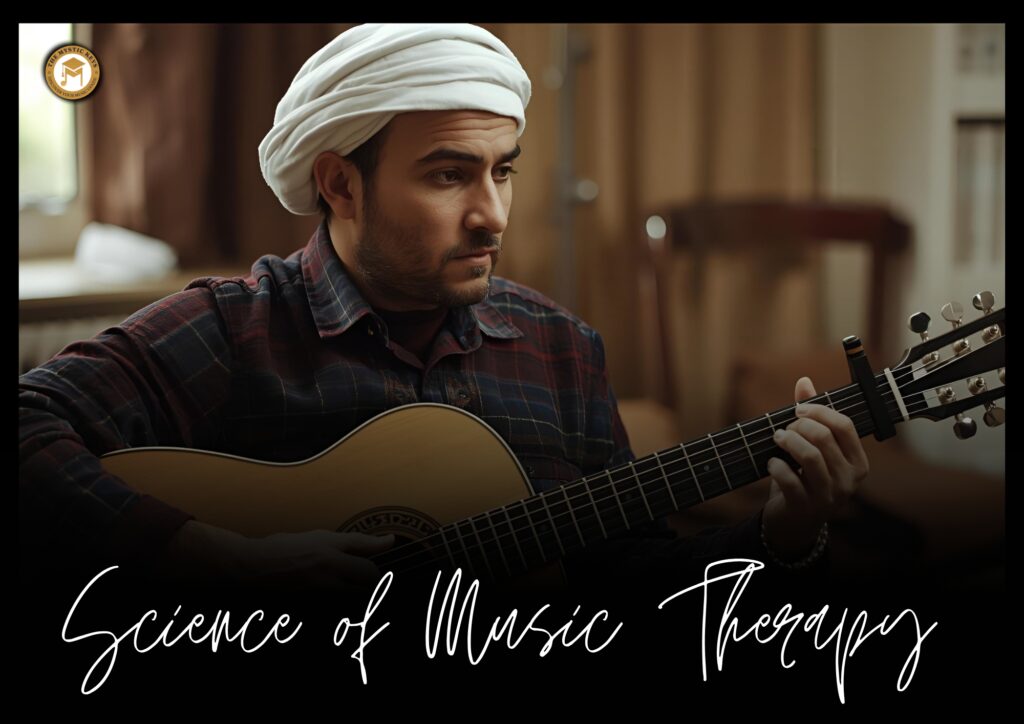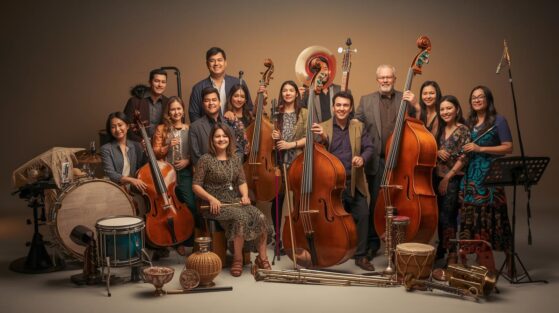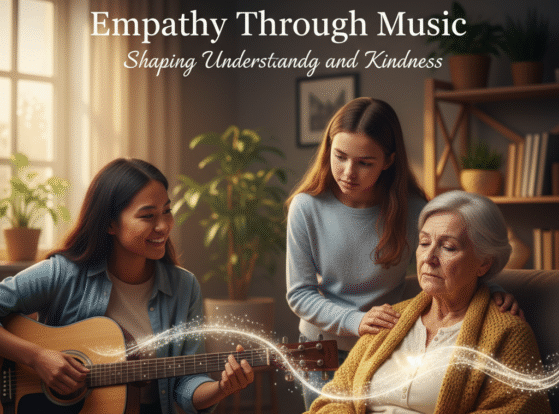Science of Music Therapy in Cancer Care
Music has always been more than just sound. It carries emotion, memory, and connection — qualities that make it a powerful tool for healing. In recent years, researchers and healthcare professionals have explored this ancient art through a scientific lens, discovering how music therapy can play a significant role in cancer care. It’s no longer viewed merely as a complementary treatment, but as a carefully structured therapeutic approach that helps patients cope with pain, anxiety, and the emotional toll of illness. This growing field, known as the science of music therapy, bridges the gap between art and neuroscience, revealing how rhythm, melody, and harmony can directly influence brain function, hormone levels, and emotional balance. By translating musical elements into measurable biological and psychological responses, experts are now uncovering the profound impact music has on the healing process.

The Science of Music Therapy and the Human Brain
When we listen to music, our brain responds in fascinating ways. Different regions light up — the auditory cortex processes the sound, while the limbic system interprets the emotion behind it. Dopamine, often called the “feel-good” chemical, is released, leading to a sense of pleasure and calm. This neurological activity has measurable physiological effects. Heart rate slows, breathing deepens, and cortisol (the stress hormone) decreases. For cancer patients undergoing aggressive treatments, this calming influence can make a profound difference.
Music also helps stimulate memory and cognitive function. Certain melodies or rhythms can evoke comforting memories and foster a sense of familiarity in patients who may feel disconnected from their usual environment. For those spending long periods in hospitals or undergoing repeated chemotherapy cycles, music becomes a bridge to a more peaceful mental state.

Clinical Science Behind Music Therapy in Cancer Treatment
Music therapy in cancer care isn’t about simply listening to songs. It’s a structured, evidence-based process guided by trained therapists who design sessions according to each patient’s needs. These sessions may include listening to selected tracks, improvising on instruments, singing, songwriting, or guided relaxation exercises using sound.
For patients in active treatment, therapists often tailor sessions to manage physical symptoms. Gentle rhythms can help synchronize breathing patterns, easing tension or discomfort during chemotherapy. Rhythmic entrainment — aligning physiological processes like heart rate to a steady beat — helps patients regulate their internal state, promoting relaxation.
Music therapy also serves as a form of emotional release. Cancer often brings a whirlwind of fear, sadness, and uncertainty. Through music, patients can express emotions that may be difficult to put into words. Singing or creating simple melodies offers a non-verbal outlet, allowing inner feelings to surface in a safe and supportive space.

Scientific Insights into Pain Relief through Music Therapy
Pain management is one of the most studied areas where music therapy shows tangible benefits. Clinical research indicates that listening to music can reduce the perception of pain by distracting the brain and activating reward pathways. This doesn’t eliminate pain entirely, but it changes how the body perceives it. The rhythmic and melodic elements stimulate the release of endorphins — the body’s natural painkillers — providing relief without the side effects of medication.
Moreover, patients report feeling more in control when they actively engage with music. This sense of participation and agency counteracts the helplessness that can accompany long medical procedures. For example, during radiation therapy sessions, curated playlists have been shown to lower anxiety and make the environment feel less clinical.

Emotional Healing and Psychological Support
Cancer doesn’t only affect the body; it deeply impacts the mind. Feelings of isolation, depression, and loss of identity are common, especially during prolonged treatment. Music therapy offers a nurturing environment for emotional expression and healing.
Through personalized sessions, patients can explore themes of hope, courage, and resilience. Music helps them reconnect with positive emotions and reframe their journey with a sense of meaning. The act of listening to or creating music fosters mindfulness — drawing attention away from distressing thoughts and toward the present moment. This mindful engagement not only improves mood but also enhances overall emotional well-being.
For children undergoing cancer treatment, music therapy becomes a playful and comforting experience. Singing, drumming, or moving to music can bring moments of joy amidst hospital routines. For adults and older patients, it serves as a reflective space to process their experiences and find comfort through familiar melodies.

Support for Families and Caregivers
The therapeutic impact of music extends beyond the patient. Families and caregivers, who often experience their own stress and anxiety, find comfort through shared musical experiences. Group sessions encourage open communication and mutual support. Music provides a way to connect emotionally when words fall short. It becomes a medium for togetherness — allowing families to share hope, love, and strength during difficult times.
Some hospitals even integrate family-inclusive music therapy programs where patients and loved ones create or listen to music together. This shared emotional journey strengthens relationships and fosters a sense of unity that is crucial for coping with the challenges of cancer care.

Research and Evidence Supporting the Science of Music Therapy
Scientific studies have consistently demonstrated the effectiveness of music therapy in cancer treatment. Research published in medical journals shows improvements in mood, sleep quality, immune response, and even treatment tolerance among patients who receive regular music therapy.
Brain imaging studies further support these findings. Functional MRI scans reveal that music activates the same neural pathways affected by pain and stress, essentially counterbalancing their effects. This intersection of neuroscience and art highlights the depth of music’s healing potential — not as a replacement for medical treatment, but as a meaningful complement that enhances quality of life.

Integrating Music Therapy into Cancer Care Programs
Healing through music is both ancient and modern. Over time, science has begun to validate what many have always felt — that music holds deep power to heal. Its emotional impact remains timeless, touching the soul when words fall short.
For cancer patients, this connection goes even deeper. Music becomes more than just sound — it offers comfort, courage, and strength. As they face fear and uncertainty, music therapy helps them find moments of calm and emotional release.
While music therapy doesn’t cure cancer, its effects are profound. It helps bring balance to the body and mind, eases stress, and restores emotional harmony. The gentle rhythm of music nurtures the spirit, reminding patients that healing isn’t only about curing illness — it’s about rediscovering wholeness, both inside and out.

A Holistic Path Toward Healing
Healing through music is both ancient and modern. Science now confirms its benefits, but its emotional power remains timeless. Music speaks to the soul when words cannot.
For cancer patients, it offers comfort and strength, helping them face fear and uncertainty with courage.
Music therapy doesn’t cure cancer, but it brings balance to the body and mind. It restores emotional harmony and nurtures the spirit. True healing is not just about curing illness — it’s about feeling whole again, inside and out.
At The Mystic Keys, we believe in the transformative power of music to heal, inspire, and uplift. In cancer care, music therapy stands as a symbol of compassion and hope — blending science and soul in perfect harmony.
For more information and exciting resources about learning music, visit our website at The Mystic Keys. For more music content and exciting offers follow us on
Facebook, Instagram, YouTube, LinkedIn, Twitter, Pinterest, and Threads.








